Let's start in the idle and in the low-load range. AMD has been able to catch up properly and it is really a long time ago that an AMD graphics card has absorbed so little in the idle of performance when it has not turned off very cleverly. So this can happen before, even if the map of MSI measured in the launch test is once again approx. 3 watts was more economical. But once there's a little more 3D load, there will be plenty of 131 watts in gaming. I measured this value in both Metro Exodus and Total War. Easier exercises, such as WoT, still hit with a more moderate 113 watts. If we compare the MSI GTX 1650 Super Gaming X 4GB, this is still up to 25 watts more when it comes to gaming.
GPU Voltage Gradients (VDDC)
If we now compare the voltages, then one can see very nicely, where above all the power explosion at the power supply comes from during the torture test. The Sapphire card delivers a constant 1,118 volts for gaming without even shutting down once. In general, the card with the new driver does things again that I could not read out in the specifications.
Let's look at the high-resolution measurements of power consumption and current/voltage. You can already see the type of regulation for Power Tune:
Standard compliance on the motherboard slot
Both cards are in the grass-green area when the motherboard slot is debited. Here, too, I have prepared a diagram for both maps: In the navigation card with the 6 phases, the load distribution is exemplary, whereby the two phases fed from the slot will never lead to an overload, even with the torture loop.
Power supply measurement and dangerous load peaks
As I have already demonstrated in detail in my basic article "The fight of graphics card against power supply – power consumption and load peaks demystified", there are also temporarily higher loads in the millisecond range, which are unfavorable in case of unfavorable designed or improperly equipped power supplies can already lead to unexplained shutdowns. The TBP (Typical Board Power) measured by the graphics card manufacturer or the reviewers does not really help for a stable design of the system.
Peaks with intervals between 1 and 10 ms can lead to shutdowns with very fast-reacting protective circuits (OPP, OCP), especially for multi-rail power supplies, although the average power consumption is still in the norm. For the Sapphire RX 5500 XT Pulse 8GB, I would therefore calculate the standard OC with 200 to 250 watts as a graphics card load proportionally to the secondary-sided overall power consumption of the system and with the MSI GTX 1650 Super Gaming X 4GB with approx. 150 to 180 watts to have enough reserves in case of a case. A short excerpt with high resolution now shows us the 20 ms measurements (10 S intervals), how I run them automatically for valuation:
Sapphire Pulse Radeon RX 5500 XT 8G, 8GB GDDR6, HDMI, 3x DP, lite retail (11295-01-20G)















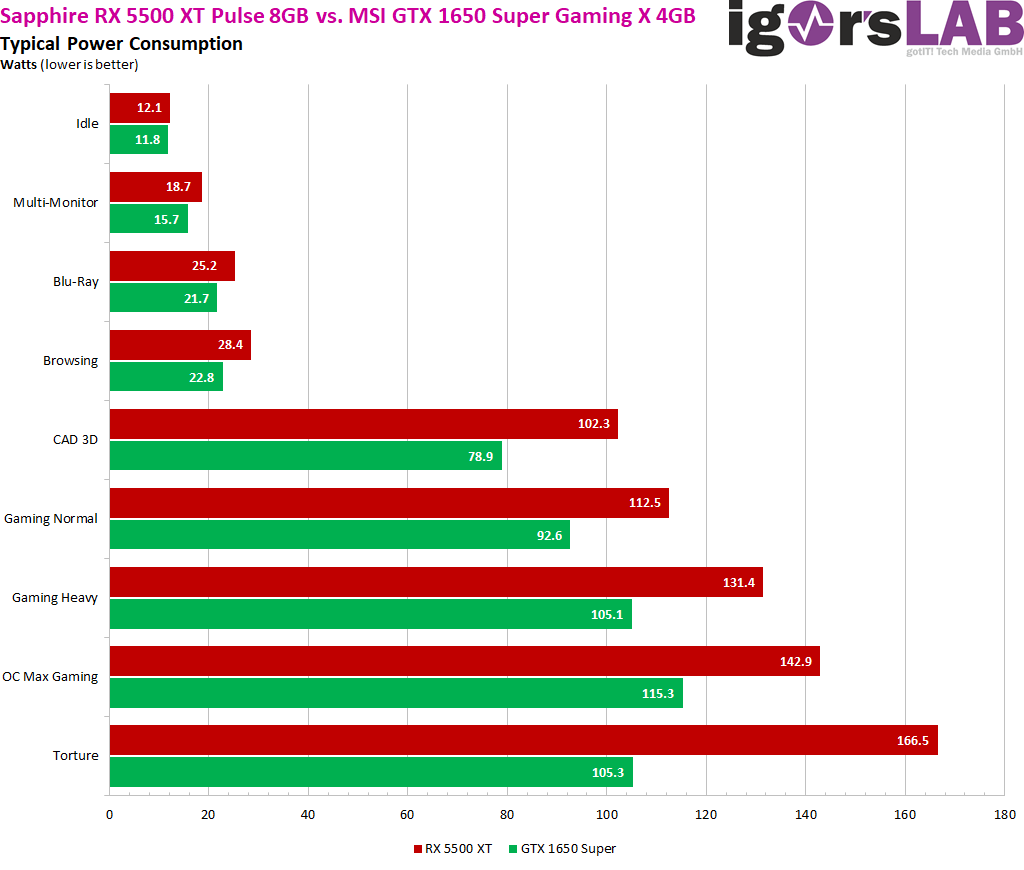
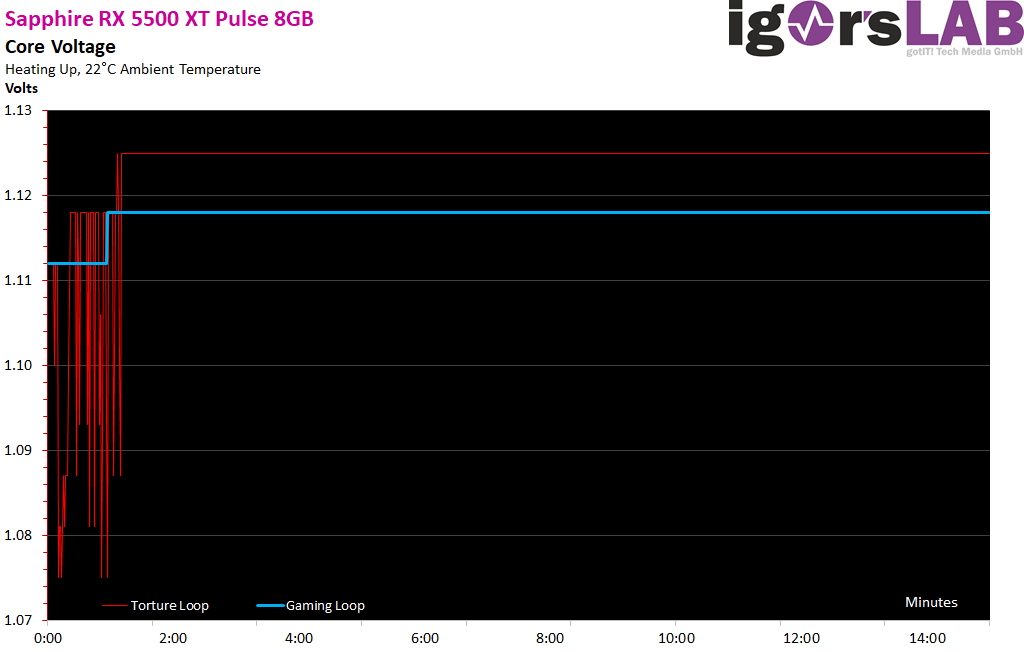
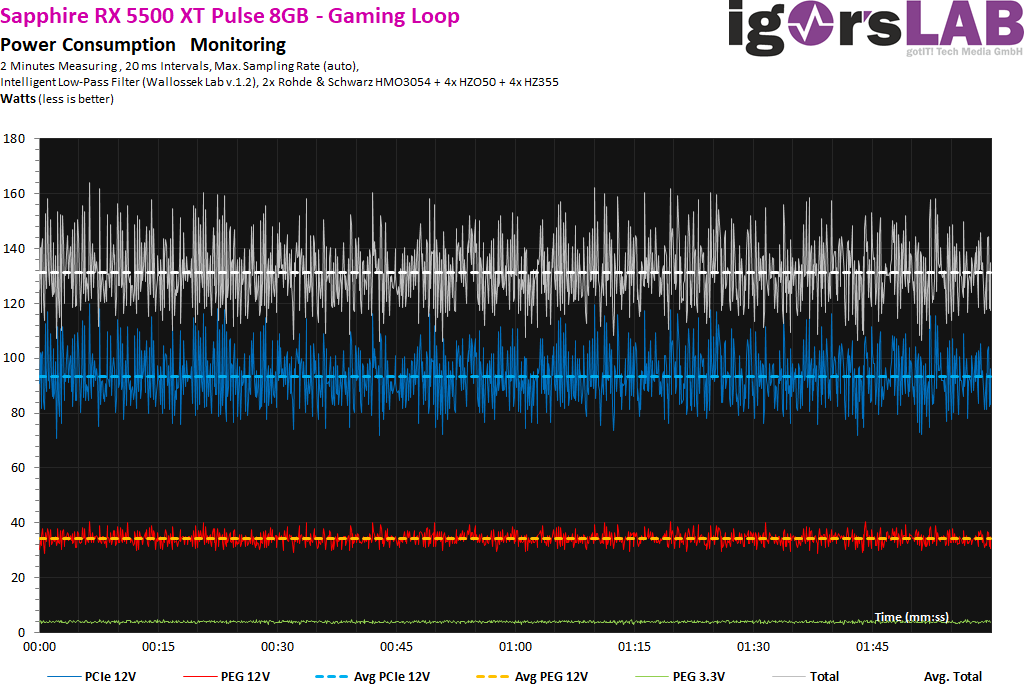
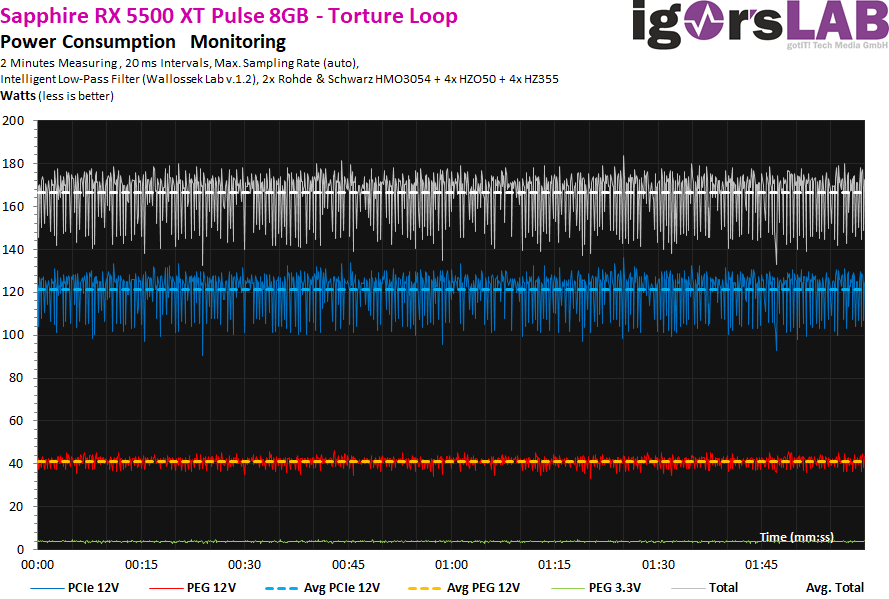
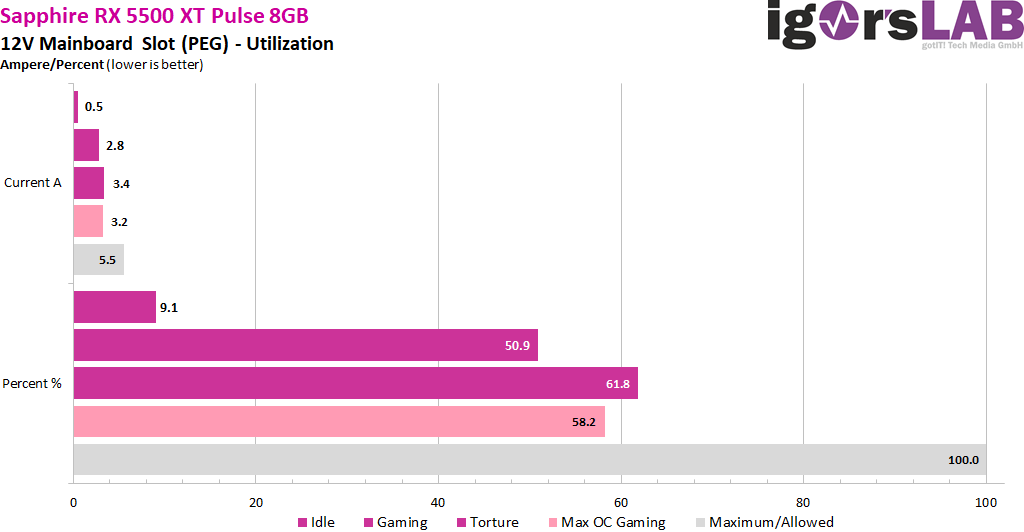
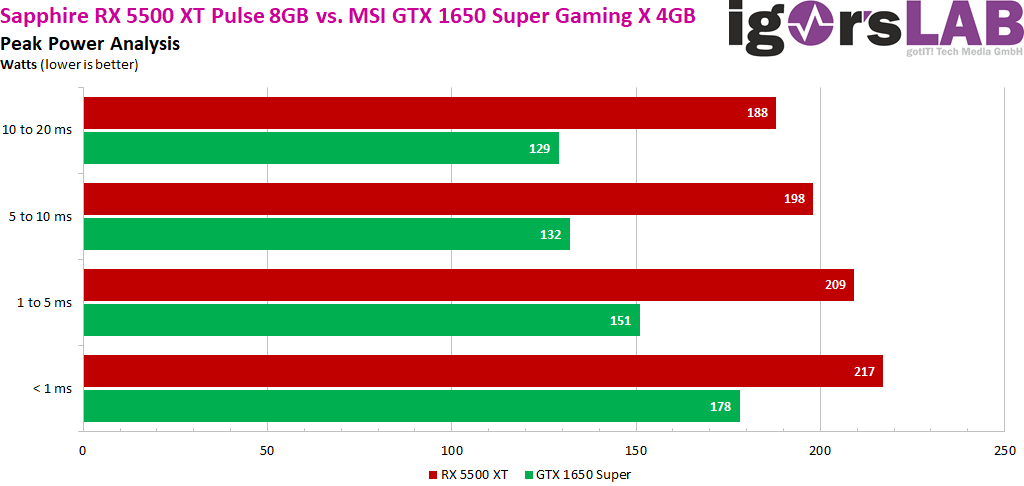
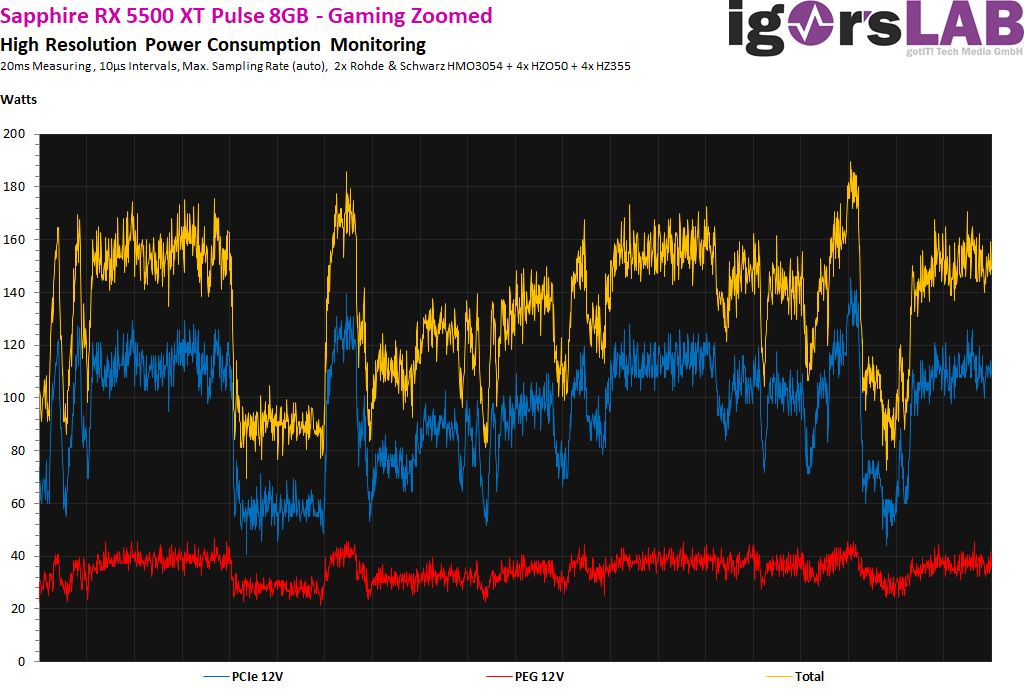
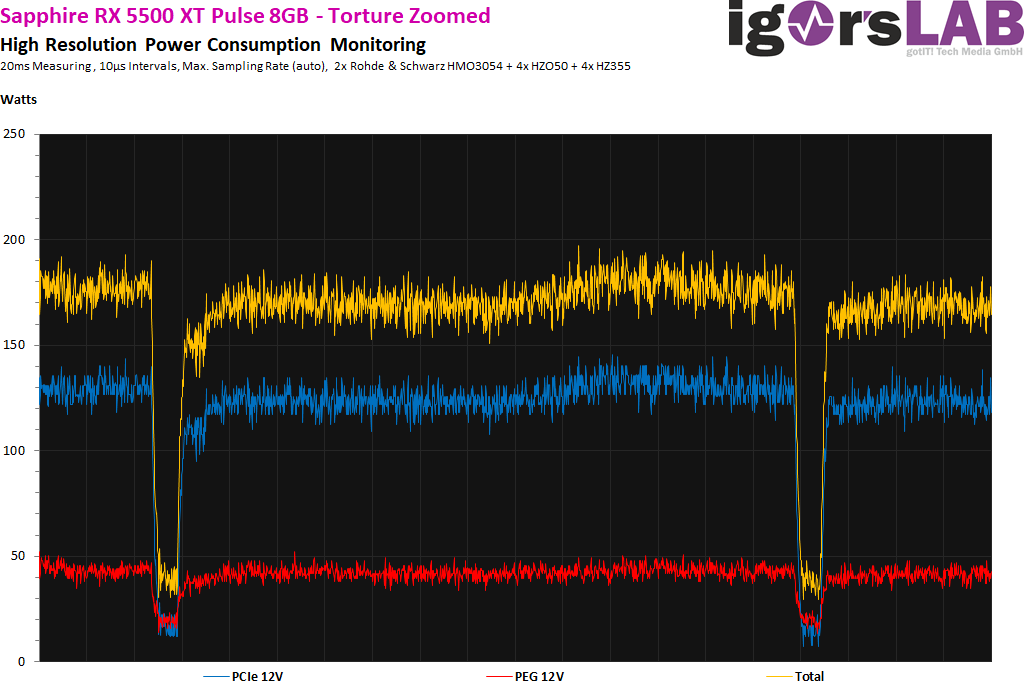


















Kommentieren